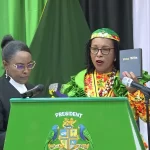Dominica Maritime Administration Regulations
The Dominica Maritime Administration Regulations document provides an extensive framework for regulating maritime activities in Dominica under the Dominica’s Maritime Administration Unit. Established under the International Maritime Act, 2000, the Administration ensures safety, security, and environmental protection within Dominica’s waters and for its registered vessels. The document details the structure, functions, and responsibilities of the Maritime Administration, highlighting its role in enforcing maritime laws and international conventions.
A key component of the document is the adherence to International Maritime Regulations in Dominica, which include major conventions such as STCW 95, SOLAS, and MARPOL 73/78. These regulations ensure that vessels and marine personnel comply with global maritime safety and environmental standards.
The Structure and Functions of the Maritime Administration section outlines the hierarchical organization of the Administration, detailing the roles and responsibilities of the central office and other designated offices. This section also describes the powers of the Maritime Administrator, including enforcing maritime laws and imposing penalties for non-compliance.
One of the fundamental processes described is the Vessel Registration Process, which involves submitting required documents, provisional certification, and issuing permanent certificates. This process ensures that vessels meet all regulatory requirements before being registered under the flag of Dominica.
The document also emphasizes the importance of Safety Documentation and Identification of Vessels, which includes maintaining accurate load lines, preventing oil pollution, and issuing registry certificates. These measures are crucial for ensuring the safety and compliance of vessels operating in Dominica’s waters.
To maintain high standards of competence among marine personnel, the Marine Personnel Licensing and Certification section outlines the requirements for obtaining and renewing licenses. This includes passing examinations and undergoing regular training to comply with international standards.
The Maritime Administration conducts regular Marine Inspections and Safety Protocols to ensure vessels’ compliance with safety regulations. These inspections cover various aspects, including structural integrity, safety equipment, and operational procedures.
In the event of accidents or violations, the Marine Casualties and Offenses section details the reporting and investigation procedures. This includes defining marine casualties, reporting requirements, and non-compliance consequences.
For vessel financing and legal clarity, the document includes regulations on Preferred Ship Mortgages and Maritime Liens. This section explains the recording of ship mortgages and the protection of mortgagees’ interests through stringent regulatory compliance.
Effective communication is essential for maritime safety, and the Radio Communication Requirements section outlines the licensing and equipment standards for ship radio stations and operators. Compliance with the Global Maritime Distress and Safety System (GMDSS) is also mandated.
The Merchant Seamen Regulations section governs merchant seamen’s qualifications and working conditions, ensuring their compliance with international standards. This includes the issuance of Safe Manning Certificates and the regulation of seafarers’ working conditions.




